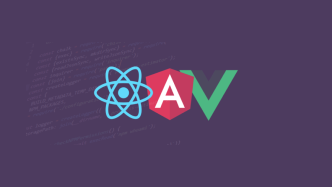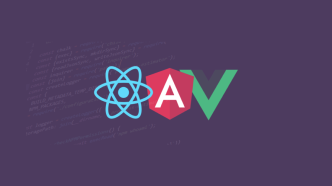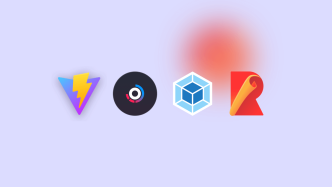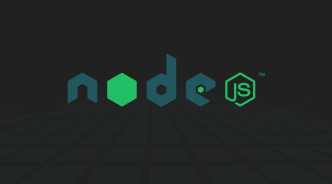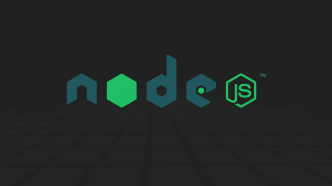Python continues to remain a solid choice not only for scripting and SaaS applications but also for Web Development, and more recently – Python has established itself as the leading programming language for Machine Learning and Artificial Intelligence projects.
In fact, if we look at the PYPL project – Python is ranked as the number one of the most popular programming languages in the world. This metric is calculated based on how often developers search for tutorials in a specific language. And Python easily tops the chart.
And if we look at the Stack Overflow Developer Survey from 2023 – Python sits comfortably in the top 5, even among the most experienced developers.
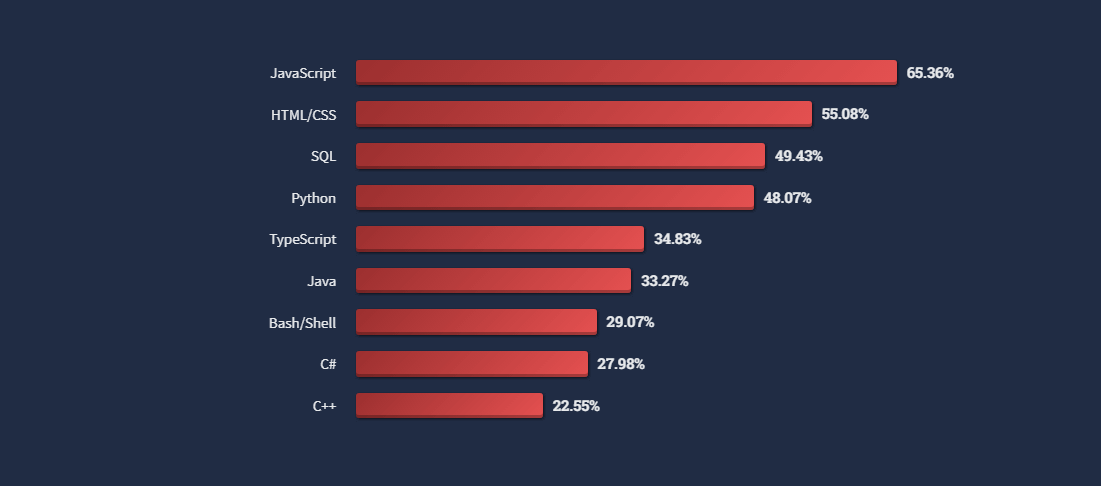
The focus of this article, though, will be entirely on web development frameworks. You’re probably already familiar with Django (maybe not?), but Django isn’t the only solid choice out there. It’s also common knowledge that Django can be overkill for simple projects (portfolios and whatnot), so we’ll be looking at several frameworks that are minimalistic by nature but retain a modular structure so that you can extend them when necessary.
Each framework has a description of its strengths and also an outline for key features.
Django
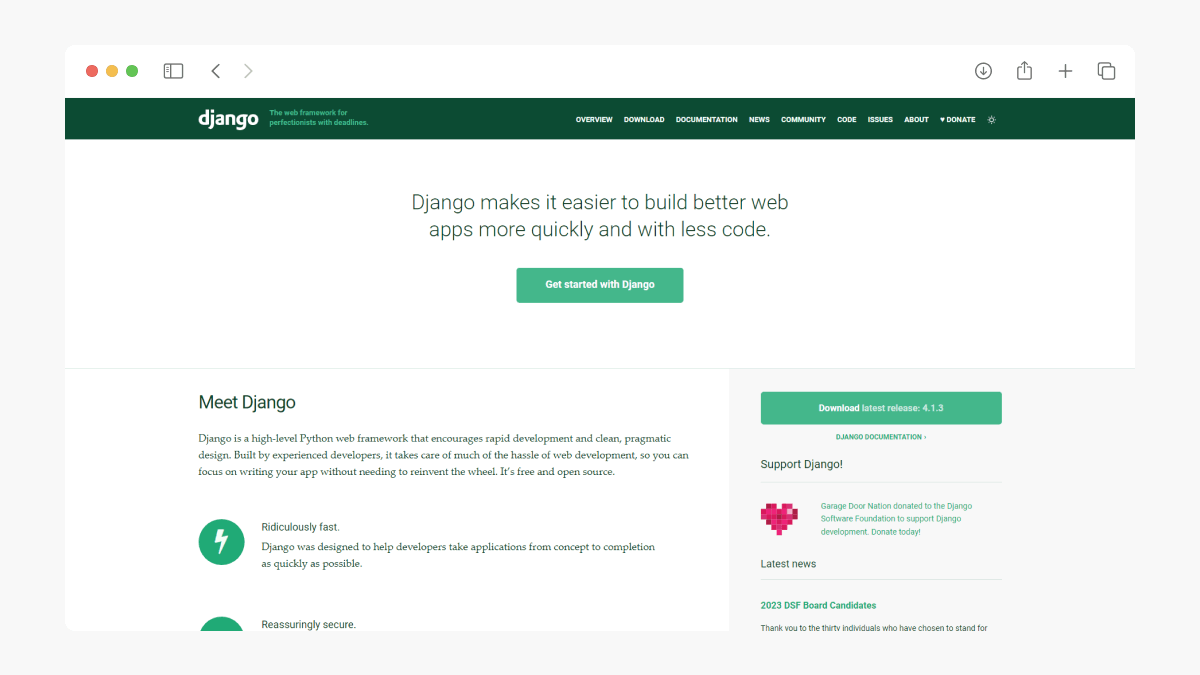
Regarding reliability and features, there’s none better than Django. It’s what Laravel is to PHP or React is to JavaScript, so to speak. The framework gives developers tools to create web apps practically at any scale. And it is considered to be among the best Python frameworks when it comes to web development.
Django has a huge set of additional libraries and support from a huge community of developers, which greatly simplifies and speeds up development.
Key features of Django:
- a custom ORM engine (Object-Relational Mapping);
- the built-in administrative interface (in simple terms – admin dashboard);
- model layer – abstract layers for app structure;
- template engine;
- form library;
- caching and internalization system;
- authorization and authentication system.
Flask
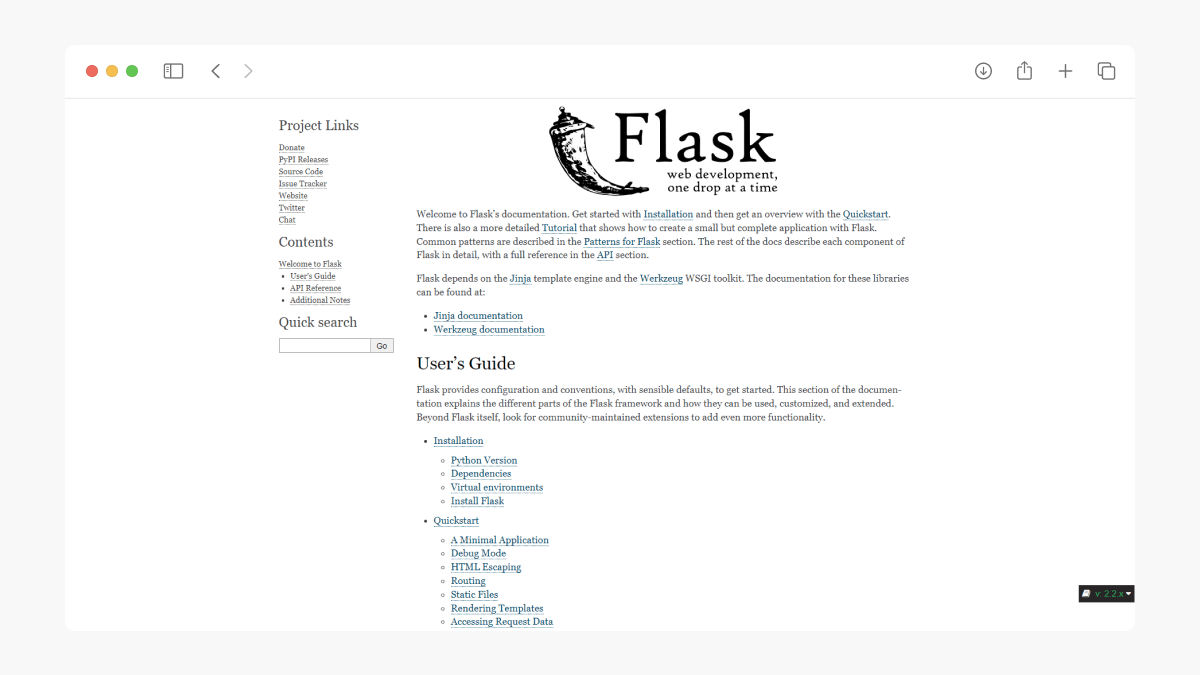
Flask is a popular, lightweight web framework for Python. It is designed to make it easy to get started with web development, particularly for beginners. Flask is based on the Werkzeug WSGI toolkit and Jinja template engine and provides a simple, easy-to-use interface for building web applications.
One of the key advantages of Flask is its flexibility. It is designed to be lightweight and extensible and provides many features out of the box, such as support for routing, request handling, and template rendering. However, Flask is also highly customizable and allows developers to add their own features and functionality easily.
Extensions & flexibility
Another advantage of Flask is its support for various third-party extensions, which can be easily installed and integrated into your application. These extensions provide additional features and functionality, such as database support, authentication, and more. This makes adding new capabilities to your application easy without writing them from scratch.
In addition to its flexibility and extensibility, Flask is also known for its speed and performance. It is optimized for performance and can handle many concurrent requests without sacrificing speed or responsiveness. This makes it well-suited for high-traffic applications.
Flask is a great choice for web development, whether you’re building a simple prototype or a complex, production-ready web application. It is easy to learn and use, highly customizable, and well-supported by many developers.
Bottle
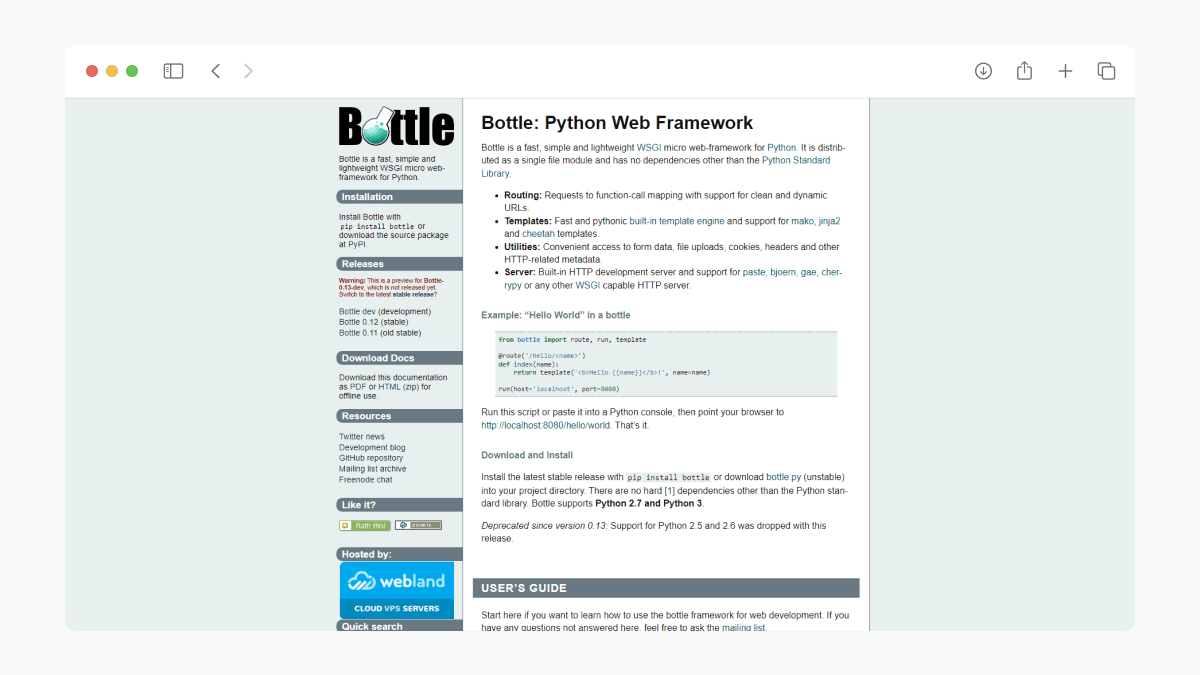
Bottle is a lightweight, fast and simple micro web-framework for Python. It is designed to be easy to use and learn and is well-suited for building small, focused web applications. Bottle is based on the WSGI specification, and is designed to be used with any WSGI-compatible server.
One of the key advantages of Bottle is its simplicity. It has a minimal feature set and provides only the essential tools for building web applications. This makes it easy to learn and use, allowing developers to quickly build simple, focused web applications without much overhead or complexity.
Another advantage of Bottle is its flexibility. It is highly customizable and allows developers to add their own features and functionality easily. Bottle also supports a variety of third-party plugins and extensions.
Key features:
- fast built-in pythonic-style template engine on top of support for Jinja, Cheetah, and Mako engines.
- built-in development web server;
- a simple mechanism for routing requests to functions with support for both static and dynamic addresses;
- easy access to cookies, file uploads, request headers, and other metadata.
CherryPy
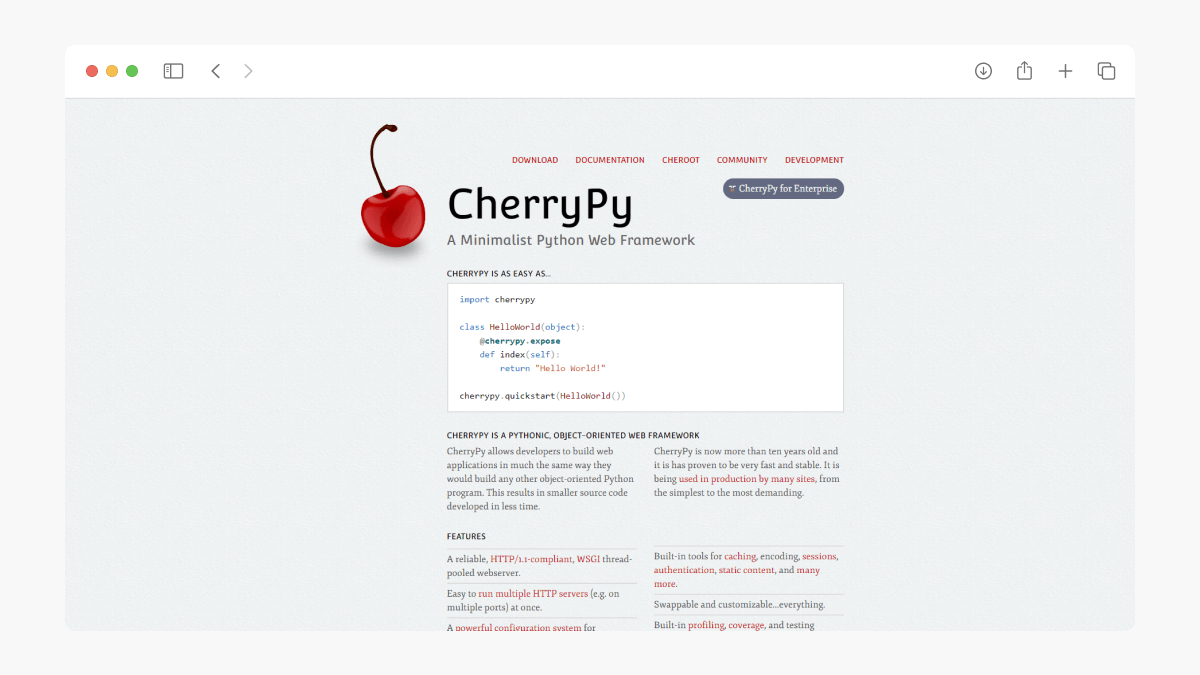
The CherryPy framework, which is over ten years old, has proven itself to be an exceptionally fast and stable product. One of the original goals of project founder Remi Delon was to make CherryPy as “pythonic style” as possible. This allowed developers to use the framework as a regular Python module and not have to think about the peculiarities of web programming.
In other words, CherryPy emphasizes creating web applications in much the same way as any other object-oriented Python program.
CherryPy includes a built-in web server, a module for encoding and decoding HTTP data, and support for many common web development tasks such as caching, authentication, static content, and templating. CherryPy is a powerful and flexible tool for developing web applications in Python.
Key features:
- A reliable HTTP/1.1 compliant multithreaded web server;
- The ability to run different HTTP servers (e.g. on multiple ports) at the same time;
- built-in tools for working with sessions, caching, authentication, and static content;
- powerful configuration system;
- built-in profiling and testing support;
- Support for Python 2.7+, 3.5+, PyPy, and Jython.
Pyramid

The Pyramid Python framework is a web application development framework that is designed to be fast, simple, and flexible.
One of the key benefits of using the Pyramid framework is its flexibility. It is highly customizable and allows developers to build applications using various approaches, from traditional server-side rendering to more modern, single-page applications. This makes it a great choice for various web development projects.
Another advantage of the Pyramid framework is its focus on performance. It is designed to be fast and efficient and includes several features that help developers create high-performance applications. This includes support for caching, efficient routing, and asynchronous processing, among other things.
Key features:
- The ability to write an application in a single file;
- request service for static files;
- a toolbar for debugging your application right in the browser;
- extensible interchangeable templates;
- built-in internationalization;
- HTTP caching; built-in session support;
- transaction management, including when working with several databases;
- Flexible, extensible authentication and authorization;
- automation of repetitive configuration.
TurboGears
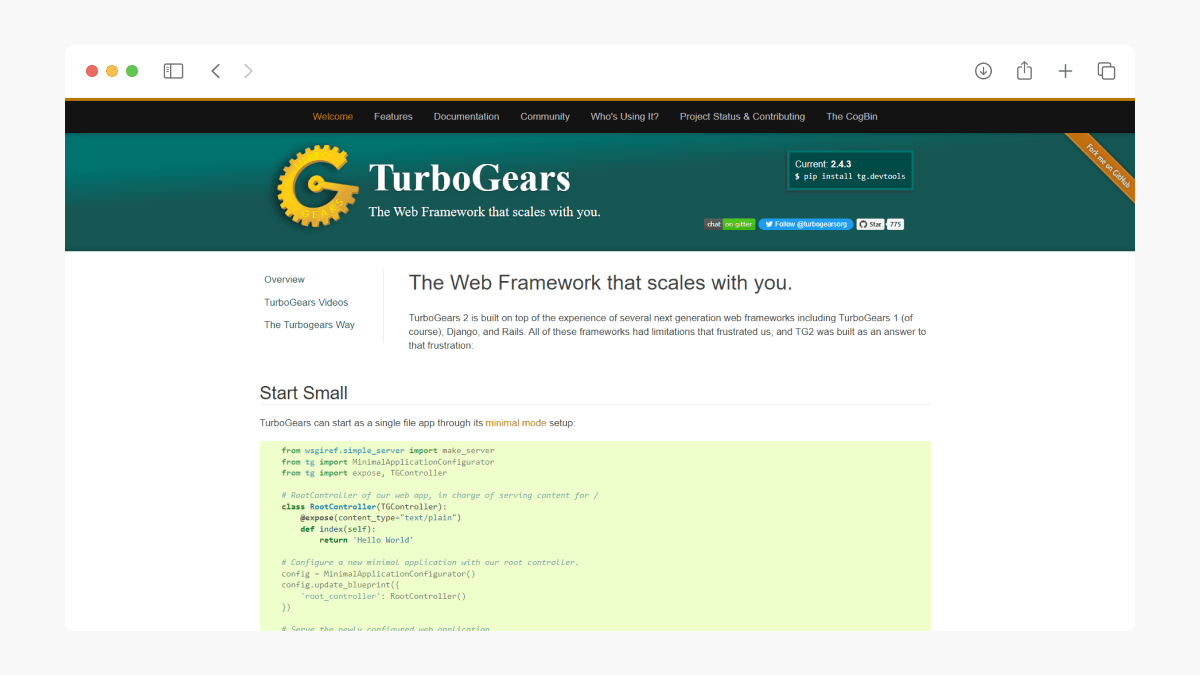
TurboGears is a web application framework that is built on top of several other popular Python web development frameworks, such as WebOb and SQLAlchemy. The framework has several built-in features that help developers quickly and easily create web applications, such as an object-relational mapper (ORM) for accessing databases and a powerful templating engine for generating dynamic HTML.
One potential downside of TurboGears is that it may be less well-known than some other Python web development frameworks, such as Django or Flask. As a result, a smaller community of developers may be familiar with TurboGears, and you can’t get support and assistance when needed. Technically, this only applies to beginners, though!
Key features:
- support for multiple databases;
- support of various JavaScript libraries;
- support of multiple data exchange formats;
- support for horizontal scaling of data by sharding;
- Expandability with standard WSGI components.
Web2Py
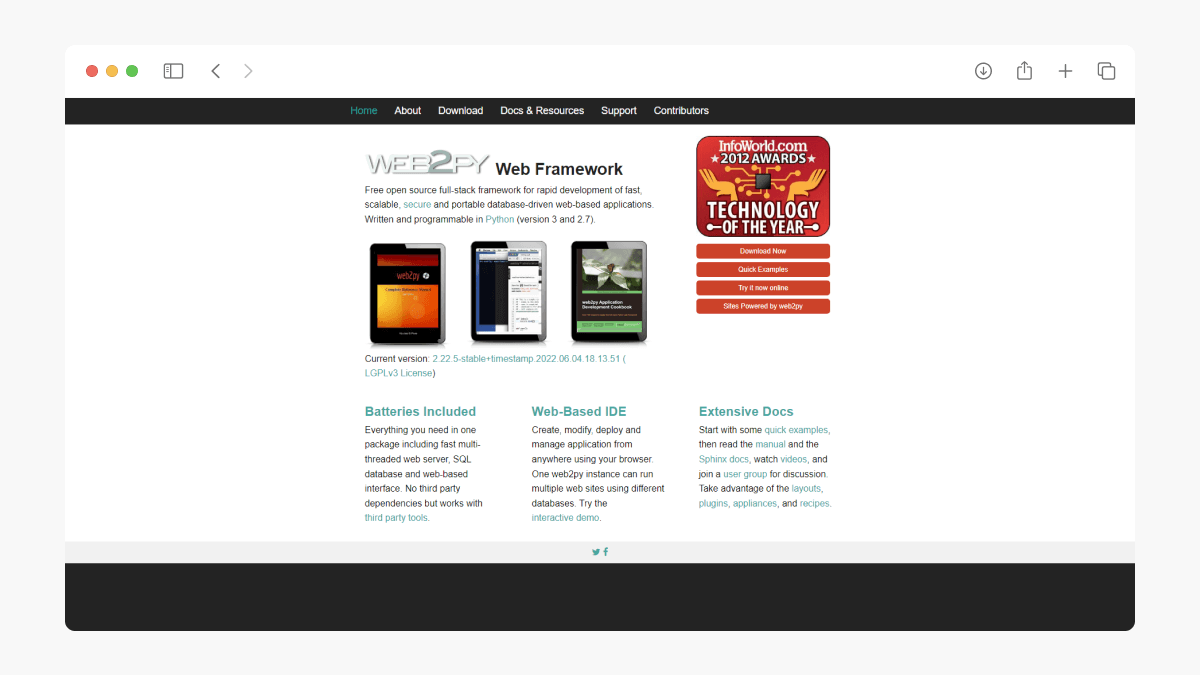
The Web2Py framework was originally conceived as a learning tool emphasizing usability and ease of use. For example, it has no project configuration files. The framework’s architecture is designed on the principle of frameworks such as Ruby on Rails and Django.
One similarity with Django, in particular, is that Web2Py provides a web-based IDE that allows users to create and manage their applications without needing any special tools or software. It also has a built-in development server and a database abstraction layer, making it easy to set up and run applications.
The framework has built-in authentication, authorization, and encryption support, which can help protect your applications and data from unauthorized access. It also has several security mechanisms in place to prevent common web application vulnerabilities, such as SQL injection and cross-site scripting attacks.
Key features:
- integrated web development environment;
- built-in components for all core functions;
- mechanisms for authentication and access control by role;
- Internationalization support;
- automatic error logging along with context.
Tornado
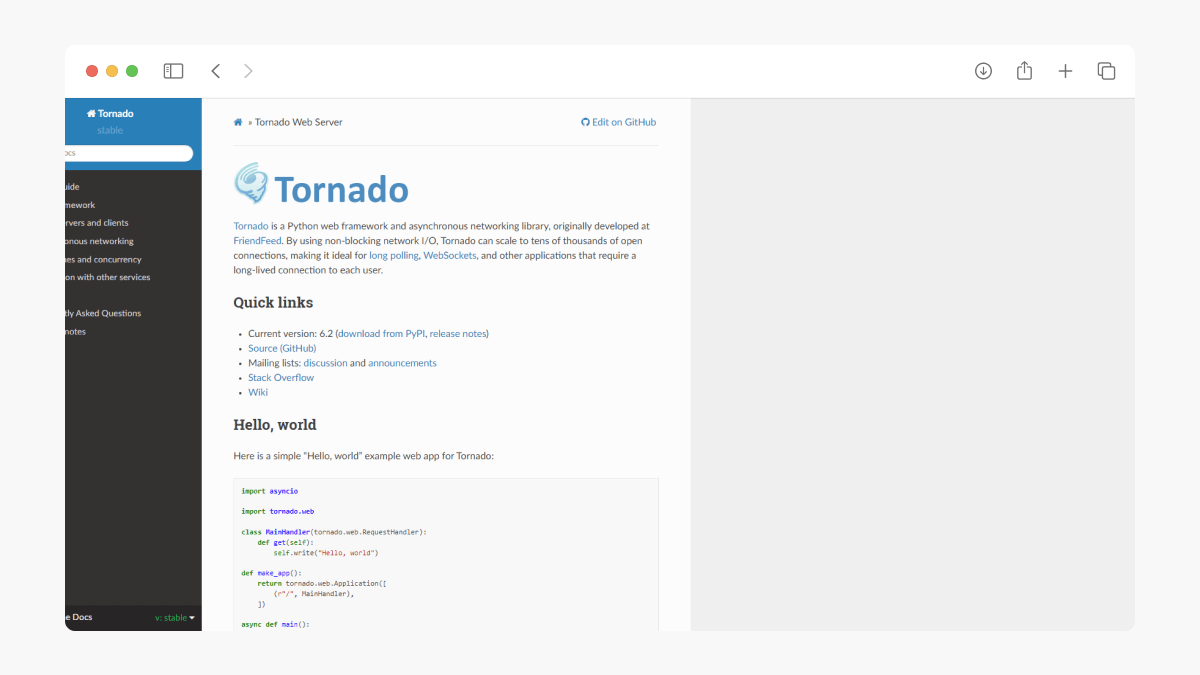
Tornado is an extensible asynchronous web server and framework that solves the C10k problem. That is, when properly configured, it can handle 10,000+ simultaneous connections. This makes it great for building applications that require super performance with I/O operations and support for a huge number of simultaneous connections.
The framework was originally created for use in the FriendFeed project, which was acquired by Facebook in 2009, after which the source code of Tornado was made public.
Key features:
- Asynchronous mode of operation;
- Use of web-based sockets;
- Support for third-party authentication and authorization schemes.
web.py
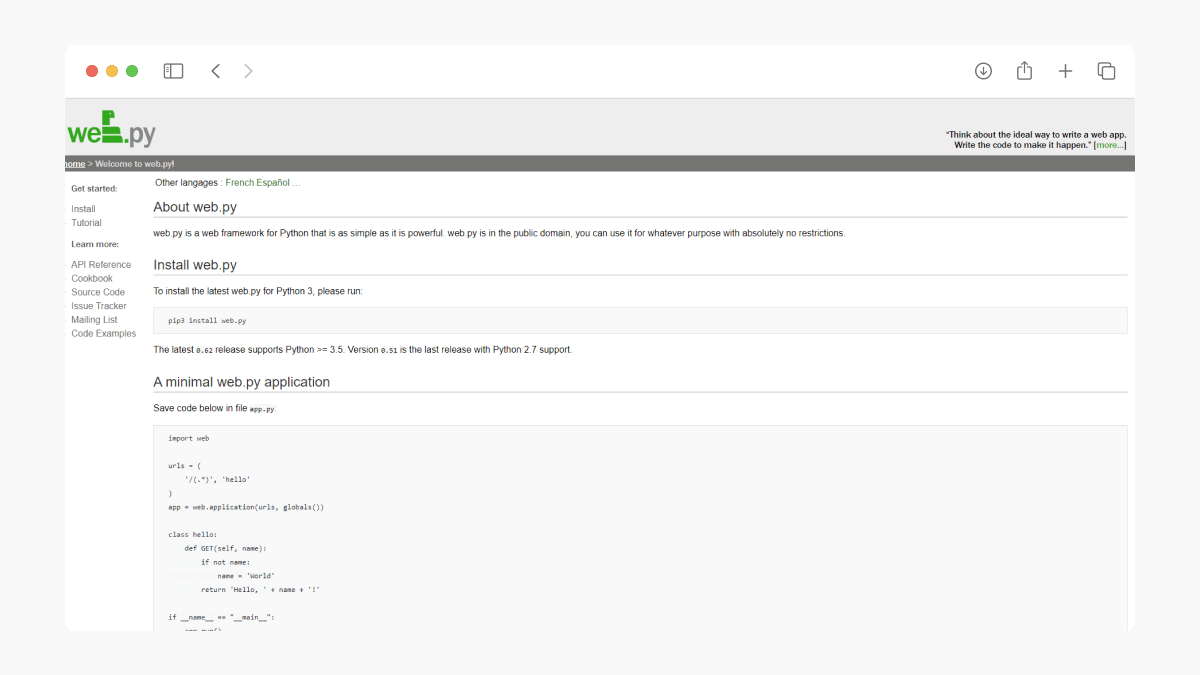
Web.py is a minimalist framework built for implementing simple web applications in Python. Those developers who believe new websites should be built from scratch will love working with this fast, lightweight framework. Web.py provides a simple and efficient development process without using complex architectures.
Speaking of which, Web.py is built on a Model-View-Controller (MVC) architecture, which helps to organize the codebase and make it more maintainable. The framework includes a powerful URL routing system that makes it easy to map URLs to Python functions. This makes creating RESTful APIs, web services, and other web applications simple.
Overall, Web.py is a great choice for developers who are looking for a simple, yet powerful web framework for Python. It is easy to learn, lightweight and has a clean, minimalistic design, which makes it ideal for building web applications of all sizes.
Key features:
- built-in web development server;
- built-in debugger;
- built-in template engine;
- built-in database package;
- WSGI compatibility.
FastAPI
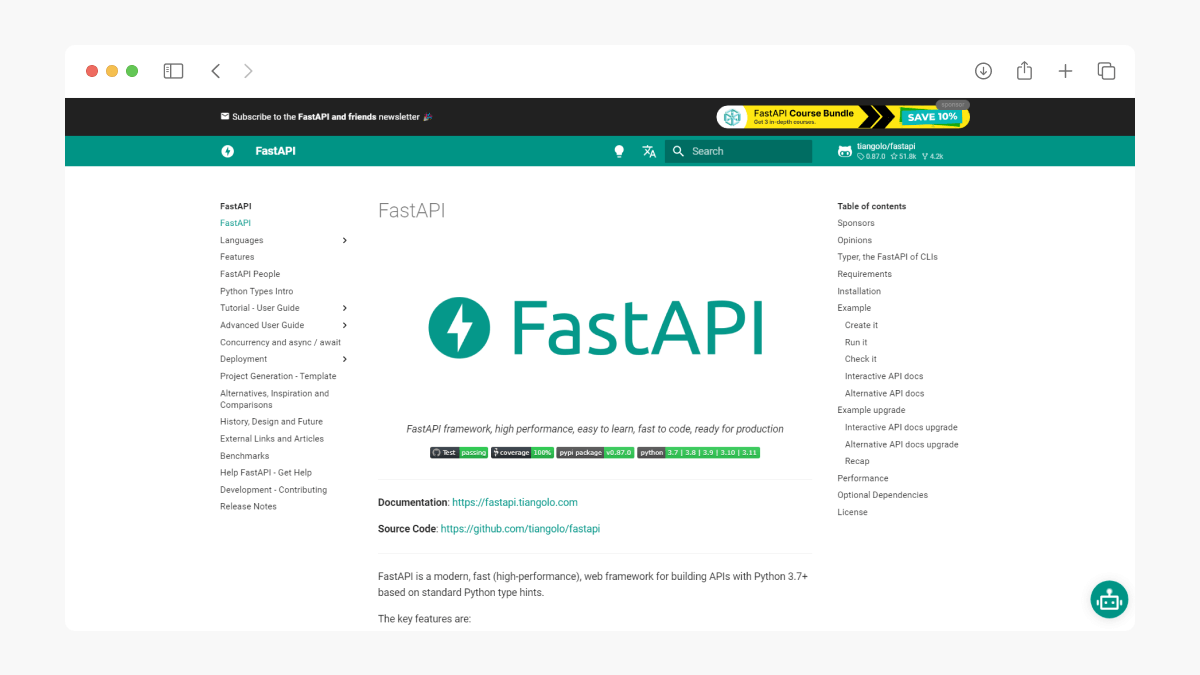
FastAPI is a modern, fast (high-performance), web framework for building APIs with Python 3.7+ based on standard Python type hints. It is built on top of Starlette for the web parts and Pydantic for the data parts. This means it has the same capabilities as these two libraries, plus some additional features and improvements.
FastAPI is designed to be easy to use and learn. It uses the same syntax for function parameters and function return types, to define the data that the API can receive and send. It uses the same syntax for routes and background tasks, to define the URLs and the functions to be executed for each HTTP method.
The framework uses the latest Python features and patterns, like async/await, to provide the best performance and the best development experience. It uses the uvloop library and the asyncio library for the best performance and the best compatibility with the other async libraries.
FastAPI is usually used for API development, without a front end, but if you want, it can be supplemented with standard templates based on the templating engine, such as Jinja2, which is used in Flask.
Key features:
- Very high performance, on par with NodeJS and Go;
- built-in Swagger-based documentation;
- use of web sockets;
- easy integration with databases;
- based on and fully compatible with OpenAPI standards.
How to choose the right framework?
If you’re unsure about which framework to choose, you can consider a few factors first:
- The type of project: Different frameworks are better suited for different types of projects. For example, Flask is a good choice for small projects, while Django is better for larger, more complex projects.
- The requirements of the project: Consider the specific requirements of the project, such as the need for a built-in ORM, support for asynchronous programming, or the ability to handle large amounts of traffic.
- The skills and experience of the development team or you as an individual: The choice of a framework should be based on the skills and experience that you or your team are comfortable working in.
- The performance and scalability of the framework: The framework should be able to handle the expected workload and scale as needed. Consider the performance and scalability of different frameworks, and choose one that meets the project’s requirements.
- The support and community behind the framework: A strong community and good support can make a big difference when working with a framework. Consider the size and activity of the community and the availability of documentation, tutorials, and other resources.
The choice of a particular framework depends on the challenges faced by the developer and personal preferences. Each time, it is necessary to evaluate the chosen framework for its compliance with the requirements of a particular task.






